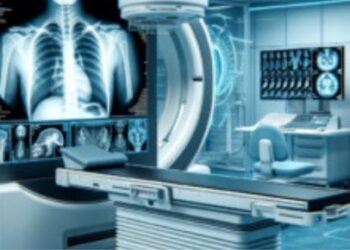Peritoneal dialysis is a type of dialysis treatment for people with chronic kidney disease (CKD) or kidney failure. Unlike hemodialysis, which filters blood through a machine outside the body, Peritoneal Dialysis utilizes the lining of the abdominal cavity, known as the peritoneum, as a natural filter to remove waste products and excess fluids from the blood. This treatment can be administered at home, providing patients with more freedom and flexibility.
How Peritoneal Dialysis Works
The peritoneal membrane inside the abdomen has tiny blood vessels that allow waste and extra fluids to pass through. During peritoneal dialysis, a sterile solution called dialysate is introduced into the abdominal cavity through a soft catheter, typically implanted in the lower abdomen. The dialysate absorbs waste and toxins from the blood through the peritoneal membrane. After a few hours, the solution, now filled with waste products, is drained and replaced with fresh dialysate.
Types of Peritoneal Dialysis
There are two primary types of peritoneal dialysis:
- Continuous Ambulatory Peritoneal Dialysis (CAPD): CAPD is a manual process in which dialysate is infused and drained manually. Typically, this procedure is done four to five times a day and requires about 30-40 minutes for each exchange. CAPD allows patients to perform their normal daily activities between exchanges, making it a flexible option for many people.
- Automated Peritoneal Dialysis (APD): APD uses a machine called a cycler to automatically fill and drain dialysate from the abdominal cavity, usually while the patient sleeps. This type of peritoneal dialysis is convenient for those who prefer not to do multiple manual exchanges during the day. A typical APD session lasts around eight to ten hours, giving patients the freedom to manage their dialysis overnight.
Advantages of Peritoneal Dialysis
Peritoneal dialysis offers several benefits, especially for patients seeking greater control over their treatment schedule. Some of the advantages include:
- Convenience: Unlike in-center hemodialysis, peritoneal dialysis can be done at home or in other comfortable settings. This flexibility is particularly beneficial for people who want to maintain an active lifestyle.
- Continuous Filtration: Since peritoneal dialysis is a continuous process, waste and fluid removal are more gradual, reducing the risk of sudden shifts in blood pressure and other side effects often experienced during hemodialysis.
- Fewer Dietary Restrictions: Many patients find that peritoneal dialysis allows them more freedom with their diet than hemodialysis, as the treatment is continuous and prevents the buildup of waste.
- Improved Quality of Life: With the option to administer treatment at night or during daily activities, patients have more freedom to work, travel, and engage in social activities without the constant need for hospital visits.
Who is Suitable for Peritoneal Dialysis?
Peritoneal dialysis is suitable for many individuals with kidney failure, although not everyone is a candidate. This form of dialysis may be ideal for people who:
- Prefer treatment flexibility and home-based care
- Have residual kidney function that can benefit from gradual, continuous dialysis
- Are young or active and want to avoid frequent visits to a dialysis center
- Have stable blood pressure levels
However, individuals who have had extensive abdominal surgery, infections, or certain medical conditions might be advised against peritoneal dialysis. Consulting a healthcare provider is essential to determine the best treatment option.
Potential Risks and Complications
While peritoneal dialysis is effective, it does come with some risks and potential complications, such as:
- Peritonitis: A bacterial infection of the peritoneum, peritonitis is a common risk in peritoneal dialysis. Symptoms include abdominal pain, fever, and nausea. This infection usually requires prompt antibiotic treatment.
- Catheter-Related Infections: Infections can occur at the catheter insertion site, leading to discomfort, swelling, and possibly the need for medical intervention.
- Weight Gain: The dialysate solution contains glucose, which can lead to weight gain and higher blood sugar levels in some patients. Careful monitoring and adjustments to the dialysis prescription can help minimize this side effect.
- Hernias: The pressure from the dialysis solution can occasionally cause hernias, especially in those who are more prone to this condition.
Living with Peritoneal Dialysis
Managing peritoneal dialysis effectively requires attention to hygiene, adherence to treatment schedules, and regular consultations with a healthcare team. Pediatric urologist Patients often receive thorough training on how to conduct exchanges safely and how to handle equipment and supplies. Emotional and psychological support is also important, as adjusting to a chronic treatment plan can be challenging.
In conclusion, peritoneal dialysis provides an effective, flexible, and home-based option for individuals with kidney failure. By understanding how peritoneal dialysis works, its advantages, and potential risks, patients and their families can make informed decisions about their treatment. Working closely with healthcare providers is crucial for ensuring safety, managing complications, and achieving the best possible quality of life.











